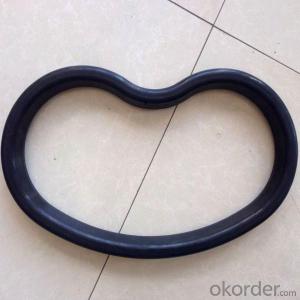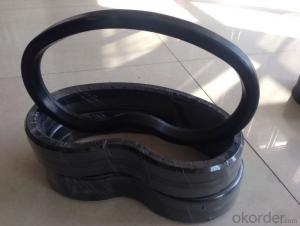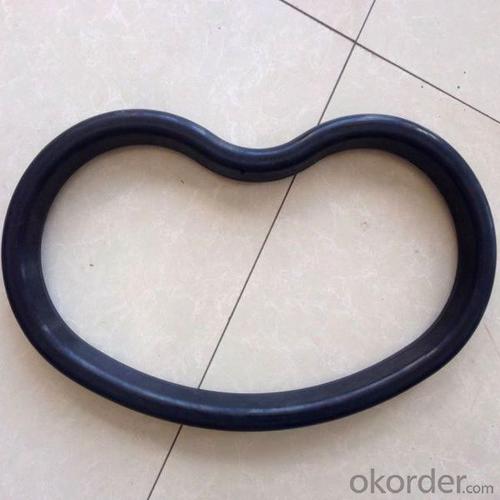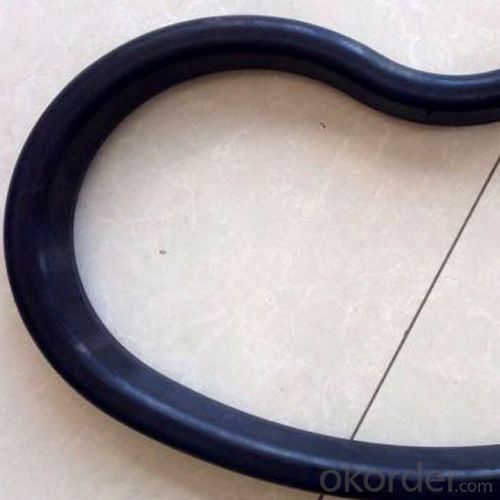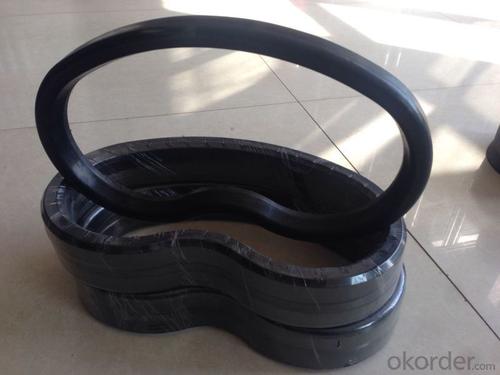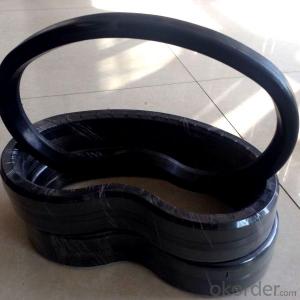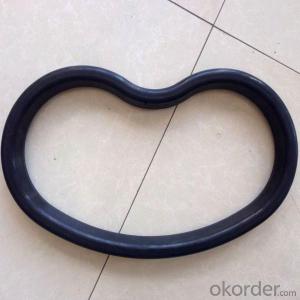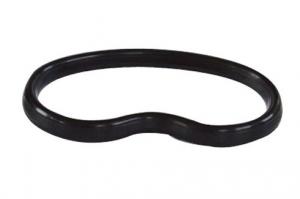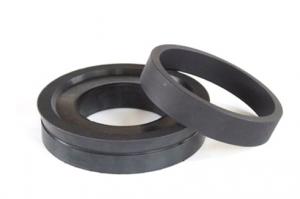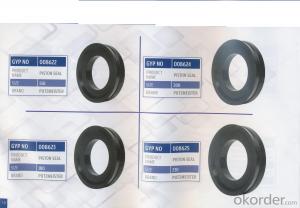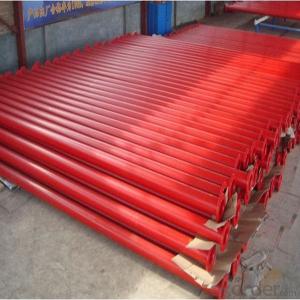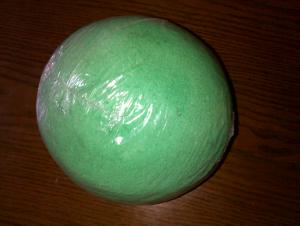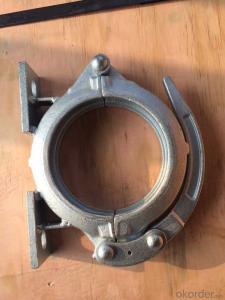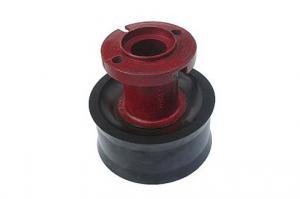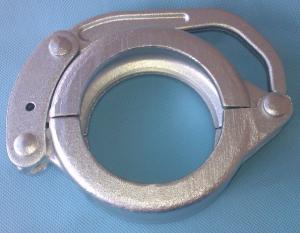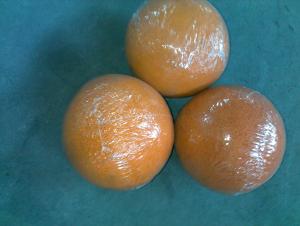Concrete Pumps Spare Parts Kidney Seal DN 180
- Loading Port:
- Tianjin
- Payment Terms:
- TT OR LC
- Min Order Qty:
- 10 pc
- Supply Capability:
- 1000 pc/month
OKorder Service Pledge
OKorder Financial Service
You Might Also Like
Product Description:
The Concrete Pumps Spare Parts Kidney Seal DN 180 normally made by special rubber materials, NR rubber and other rubbers to make sure the quanlity of seals according to customer’s requests, and also package in plywood box or cartons and put into container.
We are leading manufacturer of concrete pump wear parts in Beijing, China. Our products include wear plate&cutting ring, s valve, chrome bushing ,swing lever, wearing sleeve, spline shaft, pipe, elbow,clamp, rubber seal, delivery cylinders etc.
We are well noted the customer's needs and can offered the products by drawings from the customers, and also can manufacture according to customer request.
Scope of Application of the Goods
The Concrete Pumps Spare Parts Kidney Seal DN 180 is a concrete pumps parts for Schwing concrete pumps and truck pumps. The function of it mainly to sealing.
This seals can only be used for concrete stationary pumps and truckmounted pumps as well.
Product Advantages:
OKorder's Concrete Pumps Spare Parts Kidney Seal DN 180 Channels are durable, strong, and reliable. Our products has a qualified reputation from each customers from all over of the world.We have very good experience on middle east contries selling for this products, our suctomers happy with our seals for many years since we set up businesiness cooperations.
Main Product Features:
· Premium quality
· Prompt delivery & seaworthy packing (5-10 days)
Reliable performance
Easy to weld
High safety.
Specifications:
CNBM No. | 3000031 |
Original No. | 705422301050-2(10029138) |
Description | Kidney Seal DN 180 |
Remark |
FAQ:
Q1: How long about delivery time Concrete Pumps Spare Parts Kidney Seal DN 180 ?
A1: Normally we keep the stocks seals for our old customers to make sure delivery time in any emergency cases.
Q2: How do we guarantee the quality of our Concrete Pumps Spare Parts Kidney Seal DN 180 ?
A2: We have established an advanced quality control management system which conducts strict quality tests at every step, from raw materials to the final product. At the same time, we provide extensive follow-up service assurances as required.
Q3: How soon can we receive the product after purchase?
A3: Within three days of placing an order, the vessel will be booked for goods. The specific shipping date is dependent upon international and government factors, but is typically 7 to 30 workdays.
Q4: If we can produce some goods according to customers request?
A4: Yes, we can produce Kidney Seal DN 180 according to the difference country situations to make it suitable to the market and customers. We have very professional technical team to make the design for porduction of seals.
Q5: How to make a quick resolution for after service?
A5: OKorder and our manufacture both have overseas branches all-around of world.
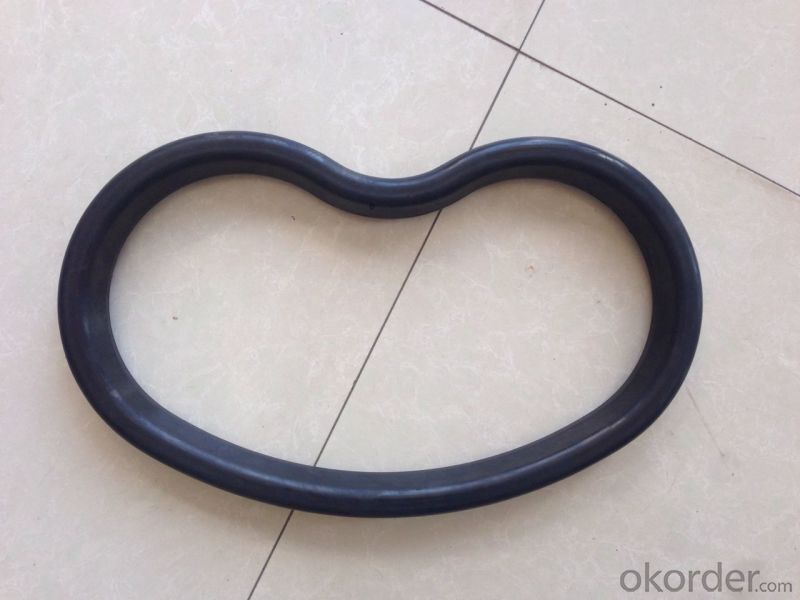
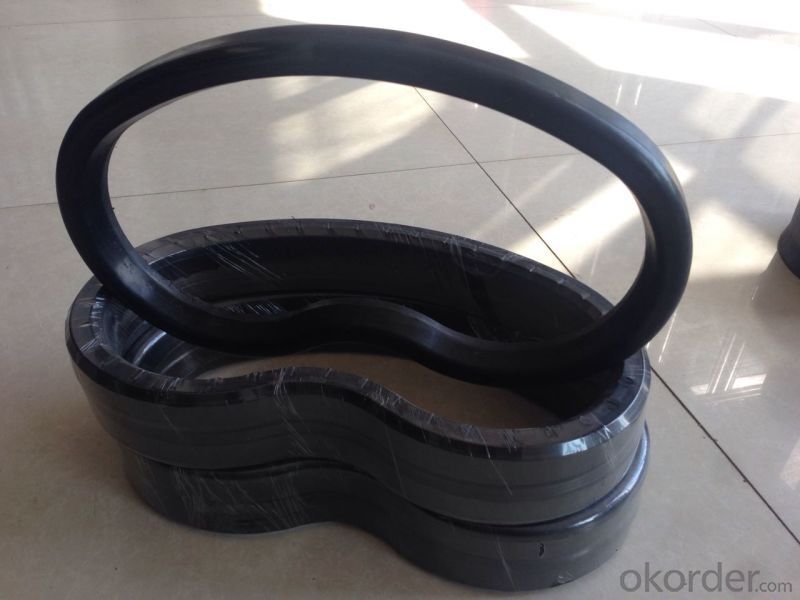
- Q: Can concrete pump spare parts be inspected or certified by third-party organizations?
- Yes, concrete pump spare parts can be inspected and certified by third-party organizations. These organizations are typically independent and have the expertise and resources to evaluate the quality, performance, and safety of the spare parts. They follow specific industry standards and guidelines to conduct inspections, tests, and audits to determine if the spare parts meet the necessary requirements. The certification provided by these third-party organizations gives assurance to customers that the spare parts have been assessed and found to be in compliance with the applicable standards. This helps to enhance trust and confidence in the products, ensuring that they are reliable and suitable for use in concrete pumps.
- Q: What is the purpose of a concrete pump hydraulic oil filter?
- The purpose of a concrete pump hydraulic oil filter is to remove contaminants and impurities from the hydraulic oil used in the pump system. Hydraulic oil is crucial for the proper functioning and longevity of the pump, as it provides the necessary lubrication and cooling for the hydraulic components. However, over time, the oil can become contaminated with dirt, debris, and other particles that can cause damage and reduce the efficiency of the pump. The hydraulic oil filter is designed to trap and remove these contaminants, ensuring that only clean and filtered oil is circulated throughout the system. By doing so, it helps to maintain the performance and reliability of the concrete pump, preventing potential breakdowns, and extending the lifespan of the hydraulic components.
- Q: Can I get spare parts for both concrete pumps with and without water tanks?
- Yes, spare parts are available for both concrete pumps with and without water tanks. Many manufacturers and suppliers offer a wide range of spare parts for concrete pumps, including different models with or without water tanks. These spare parts can be used for regular maintenance, repairs, or replacements of various components, such as hoses, pipes, valves, cylinders, seals, and more. It is important to ensure that you purchase the correct spare parts specific to your concrete pump model to ensure compatibility and optimal performance.
- Q: How long does it take to receive concrete pump spare parts after placing an order?
- The delivery time for concrete pump spare parts can differ depending on various factors. Firstly, it relies on the availability of the specific spare parts you have ordered. If the parts are readily in stock, the delivery time can be relatively fast. However, if the parts need to be manufactured or sourced because they are not in stock, it may take longer to receive them. Secondly, the distance between the supplier and your location also plays a role in the delivery time. If the supplier is nearby, the parts can be delivered within a few days. However, if the supplier is far away or in a different country, it may take longer due to shipping and customs procedures. Moreover, the delivery time can also be influenced by the shipping method you choose. Expedited shipping options can ensure quicker delivery but at an additional cost. On the other hand, standard shipping methods may take longer but are usually more cost-effective. Lastly, the efficiency and responsiveness of the supplier also factor into the equation. A reliable supplier with a streamlined ordering and shipping process will likely be able to deliver the spare parts more quickly. To sum up, the time it takes to receive concrete pump spare parts after placing an order can vary based on factors such as availability, distance, shipping method, and supplier efficiency. It is advisable to inquire about estimated delivery times when placing the order to gain a better understanding of when the parts will be delivered.
- Q: How often should hopper cylinder seals be replaced in a concrete pump?
- The frequency at which hopper cylinder seals should be replaced in a concrete pump depends on several factors such as the quality of the seals, the intensity of usage, and the maintenance practices followed. Ideally, hopper cylinder seals should be inspected regularly for any signs of wear and tear or damage. If there are visible cracks, tears, or leaks, it is recommended to replace the seals as soon as possible to prevent any further damage to the concrete pump. In general, hopper cylinder seals can last anywhere from several months to a couple of years, depending on the aforementioned factors. However, it is essential to establish a preventive maintenance plan and regularly monitor the condition of the seals to ensure optimal performance and minimize downtime. Additionally, it is advisable to consult the manufacturer's guidelines or seek advice from a professional concrete pump technician to determine the specific replacement interval for hopper cylinder seals based on the pump model, usage patterns, and environmental conditions.
- Q: What are the elements of concrete pump and concrete pump truck selection?
- Concrete casting factors, concrete pump truck selection should be based on concrete engineering objects, characteristics, the requirements of the maximum transmission distance, concrete construction plan, concrete pump form and concrete conditions for comprehensive consideration
- Q: Are there any specific safety precautions for handling concrete pump spare parts?
- Concrete pump spare parts require specific safety precautions to be followed. It is essential to wear the appropriate personal protective equipment (PPE) like gloves, safety goggles, and a dust mask. This ensures protection against potential hazards, as concrete dust can harm the skin and cause respiratory issues if inhaled. Proper lifting techniques are crucial when handling these spare parts to prevent strains or injuries. Heavy parts should be lifted using lifting equipment or with the assistance of others to minimize accidents. Moreover, it is vital to handle the spare parts with care and avoid rough handling or dropping to prevent damage or breakage. Damaged spare parts can negatively impact the concrete pump's performance and safety. Storing the spare parts in a clean, dry area away from moisture or chemicals is also important. This prevents potential damage that may compromise the quality and integrity of the spare parts. Lastly, it is advisable to always follow the manufacturer's instructions and guidelines for handling concrete pump spare parts. They provide specific safety precautions and recommendations, ensuring the parts are handled and used safely. By adhering to these safety precautions, the risk of accidents, injuries, and damage to the concrete pump spare parts can be minimized, creating a safe working environment.
- Q: What is the purpose of a concrete pump piston?
- The purpose of a concrete pump piston is to provide the necessary pressure to push the concrete mixture from the hopper into the delivery pipeline. The piston is responsible for generating the force required to propel the concrete through the system, effectively transporting it to its intended destination. This is achieved by the reciprocating motion of the piston, which creates suction on one side and pressure on the other, enabling the concrete to be pushed forward. Overall, the concrete pump piston plays a crucial role in facilitating the efficient and continuous movement of concrete, making it an essential component in construction projects that require the precise and timely placement of concrete.
- Q: How do I properly maintain and replace concrete delivery pipes in concrete pump spare parts?
- Proper maintenance and replacement of concrete delivery pipes in concrete pump spare parts involve a few key steps. Firstly, regular inspection of the pipes is essential to identify any signs of wear, corrosion, or damage. It is important to clean the pipes thoroughly after each use to prevent the buildup of concrete residue. Additionally, using a high-quality lubricant during operation can help minimize friction and prolong the life of the pipes. When it comes to replacement, it is crucial to choose pipes that are compatible with the specific model of the concrete pump. The replacement pipes should be made from high-quality materials that can withstand the pressure and abrasive nature of concrete. It is advisable to consult the manufacturer's guidelines or seek professional advice to ensure the proper selection and installation of replacement pipes. Overall, regular inspection, cleaning, and lubrication, along with proper selection and installation of replacement pipes, are essential for maintaining the efficiency and longevity of concrete delivery pipes in concrete pump spare parts.
- Q: How can a faulty lubrication system affect the pump's performance?
- A faulty lubrication system can significantly affect the pump's performance in several ways. Firstly, a lubrication system is responsible for providing a thin film of lubricant between moving parts of the pump, reducing friction and wear. If the lubrication system is faulty or inadequate, it can result in increased friction between components, leading to excessive heat generation and accelerated wear and tear. This can ultimately reduce the efficiency and lifespan of the pump. Secondly, a faulty lubrication system can cause inadequate lubrication to critical components, such as bearings and seals. Insufficient lubrication can lead to increased friction, heat, and ultimately, premature failure of these components. This can result in increased downtime, costly repairs, and potential damage to other parts of the pump. Furthermore, a faulty lubrication system can also result in the contamination of the lubricant. Contaminants such as dirt, debris, or moisture can enter the system due to leaks or improper maintenance. These contaminants can cause abrasive damage to the pump's internal components, leading to reduced efficiency, increased wear, and potential failure. Lastly, a faulty lubrication system can also impact the pump's overall performance and energy consumption. Insufficient lubrication can increase the power requirements of the pump as it works harder to overcome friction and resistance. This can result in higher energy consumption and increased operating costs. In conclusion, a faulty lubrication system can severely impact the pump's performance by causing increased friction, accelerated wear and tear, premature failure of critical components, contamination of the lubricant, and increased energy consumption. Regular maintenance and proper lubrication are crucial to ensure the pump operates at its optimal level and to extend its lifespan.
Send your message to us
Concrete Pumps Spare Parts Kidney Seal DN 180
- Loading Port:
- Tianjin
- Payment Terms:
- TT OR LC
- Min Order Qty:
- 10 pc
- Supply Capability:
- 1000 pc/month
OKorder Service Pledge
OKorder Financial Service
Similar products
Hot products
Hot Searches
Related keywords
